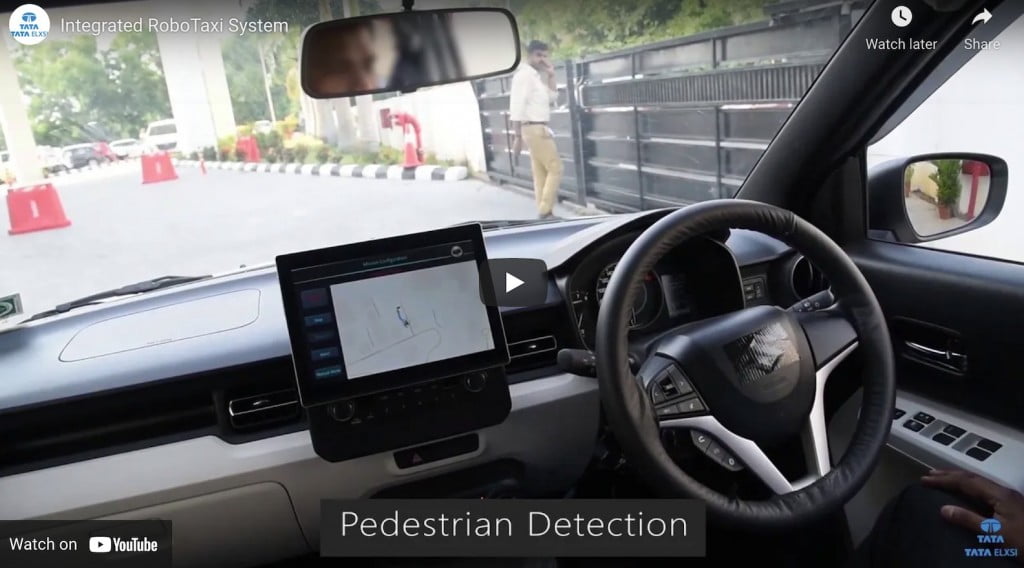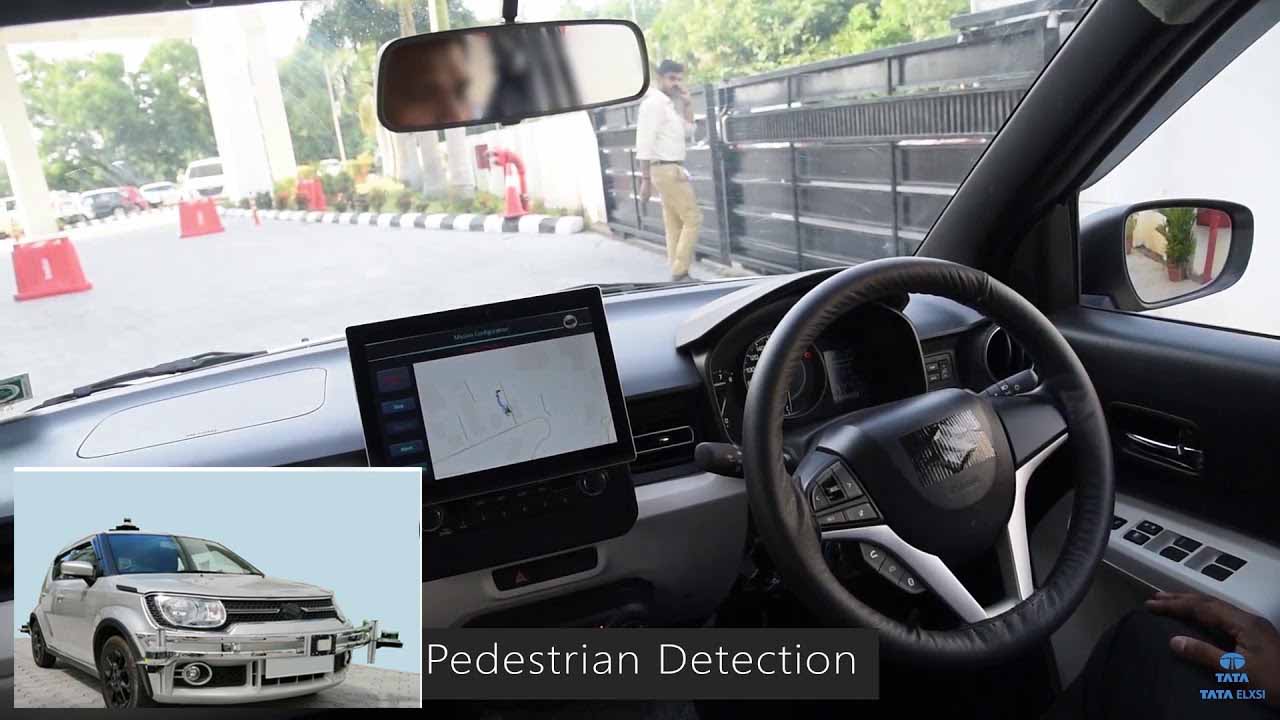Tata ELXSI is the technology and design department of Tata Group which plans to develop a fully autonomous version of this test mule, Maruti Ignis. The research and development in the area of Artificial Intelligence and Self-Driving cars is gaining momentum in India as well. Some of the global markets are way ahead in this regard. Tata ELXSI is a great in-house firm of the Tata Group that is consistently keeping an eye out for the latest happenings in the world of Deep Learning and AI which form the basis of autonomous cars. This Maruti Ignis was created back in January 2020. Let us discuss some of the unique and defining features of this project by Tata.
Also read: Tata Nexon EV Spearheads 234% Growth in Electric Car Sales!
Also read: Apple Delays the Plans to Launch its Self-Driving Car to 2026
Tata ELXSI Develops Autonomous Maruti Ignis
This project was taken up by Tata Group (ELXSI) along with artificial perception pioneer AEye. The result was this RoboTaxi that had almost all the necessary AI and self-driving features required to ply on the roads. The RoboTaxi is a level 4 autonomous driving ready vehicle. The testing of this is done while keeping in mind various real-world scenarios like obstacles detection, classification and tracking, pedestrian crossing, motion sensing, longitudinal and lateral motion control, HD map generation, Drive-by-wire, taking inputs from various Lidars and Radars, Cameras and other sensor devices, environment perception, road model generation, traffic participants and path prediction, among other features. These features are integrated into the software middleware platform Autonomai with deep learning and AI capabilities.
Also read: Film Actor’s Tata Nexon Lands on Nose In VERTICAL FALL – VIDEO

As is clear from the unique tech features above, this RoboTaxi is a great step in the autonomous driving field in India. Ignis has been used in this process as a demo car and the results are visible from the video. With companies like MG Motors coming up with Level 2 autonomous driving features in mass production cars like the Astor, it seems like this is where the automobile industry is headed. However, it must be understood that this is a long and arduous journey and will take a long time to develop and an even longer time to adopt. This is especially true in a country like ours where the road conditions could not be predicted at all. But if an Indian company like Tata Group develops something in this field like this autonomous version of Ignis, it will most likely take all these factors into account. Let us see when do we actually see this RoboTaxi on our roads.



